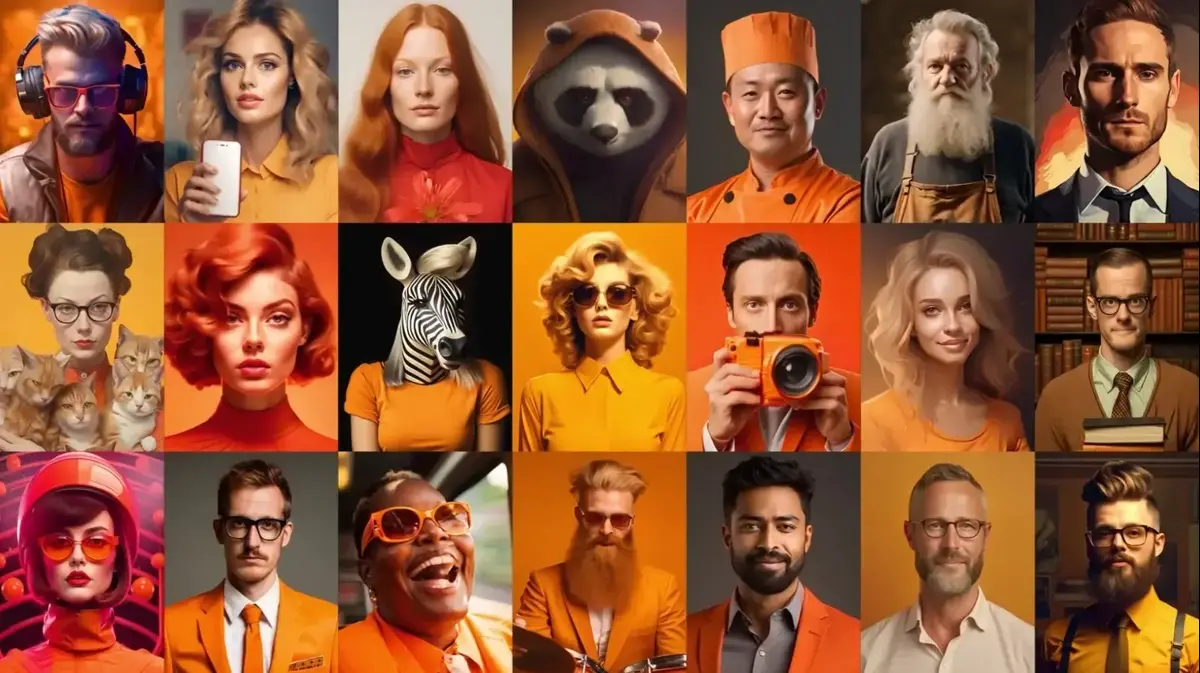The battle for content creators: Tiktok continues to grow and YouTube is upping the ante
While Tiktok continues to bite into large market shares, YouTube is not left behind and is launching monetization options for SHORTS creators as well.
So what actually changed and how can you leverage it for your marketing needs?
Ditza Kern
09/20/2022
Tuesday, September 20, 2022, 12:38 p.m. Updated: 1:14 p.m.
Share on Facebook
Share on WhatsApp
Share on Twitter
Share by email
Share in general
Comments
Comments
Short loop videos are gaining popularity among both organic and paid advertisers. (Photo: Unsplash)
Slowly but steadily, those who were machines until yesterday "social networks" took a sharp turn in the plot and became platforms that are first and foremost intended for content creators, with the understanding that they are the ones who bring the audience and, as a result, the paid advertisers as well.
This perceptual change comes after a period in which Tiktok is biting more and more market shares that are growing.
A recent survey conducted by Triple Whale ecommerce analytics tool among about 5,000 ecommerce brands found that in the second quarter of 2022 brands spent 60% more on advertising on TikTok, for a total of $29.9 million.
In the first two quarters of this year, retailers spent a total of $48.4 million on TikTok ads - a 231% increase over the previous 6 months.
This is when the total spending on ads among the 5,000 retailers who participated in the survey increased by 11% in the second quarter to a total of 529.7 million dollars.
The survey also shows that medium-sized retailers, with revenues of 1-5 million dollars per year, are the main contributors to the increase in advertising expenses.
"If your store has a similar revenue rate, take note: it's time to get into TikTok while the needle is still moving up, or before users are completely inundated with new brand ads," says Triple Whale.
"TikTok is no longer a channel that serious media buyers can avoid without cutting into revenue and profits," and it "may soon overtake Facebook as the most valuable platform."
What is happening in the video arena?
A survey by Social Media Examiner in 2022 shows that the use of short loop videos, a format that was the main differentiator of TikTok at the beginning, is on the rise: almost one in four marketers said that this is the most important video format.
67% of marketers surveyed plan to increase their use of YouTube videos and 69% want to learn more about organic promotion using the platform.
While only 18% of marketers use TikTok, 37% plan to increase their activity on the platform and 47% are interested in learning more about TikTok.
Tiktok, which until recently was an unused platform with relatively cheap prices, began to increase in demand and as a result the costs also increased.
The prices per thousand impressions vary according to the niche.
Baby products, books and collectibles can be advertised for less than $10 per thousand impressions, while health, beauty and digital products will pay over $14 per thousand impressions.
However, given its popularity, brands that don't take advantage of TikTok may be leaving a lot of revenue and opportunity on the table.
Despite Tiktok's phenomenal growth, Facebook is still the leading choice among e-commerce brands, which in the second quarter alone spent approximately $377 million on advertising on the platform, an increase of 5.6% from the first quarter.
Google also grew by 20.5% in the second quarter and brought in $118.9 million in spending on direct-to-consumer ads.
More in Walla!
This is how TikTok intends to become a safer place for users, and you have a part in it
To the full article
YouTube's answer: monetize SHORTS
At the same time, the New York Times revealed this week that YouTube plans to launch ads on Shorts and pay creators 45% of the ad profits on Shorts.
In doing so, YouTube plans to become a viable and attractive platform for short video creators who wish to receive stable monetization for their content.
YouTube's affiliate program has been around since 2007, and it offers creators 55% of the revenue earned from ads that appear before or during their videos.
It is understandable why the monetization in shorts is lower, after all, YouTube has an interest in prioritizing more in-depth content than 15-second videos and this is also its main differentiator.
At the same time, YouTube hopes that the introduction of monetization options for Shorts will help curb the meteoric growth of TikTok and become a preferred platform among video creators.
Amjad Hanif, vice president of product management and creative products at YouTube, said during an internal meeting of the company that was leaked to the New York Times that the payments "will help creators understand why YouTube is the place to start their shorts career."
Hanif also said that the company will allow creators to use popular music in videos and earn money from the content.
These revenues previously went to the copyright holders of the music.
"This is the biggest expansion we've done in several years that has created new ways for creators to join the program," Hanif said.
It is worth noting that content creators have been criticizing YouTube's monetization options for some time, claiming that the payments are low and inconsistent.
YouTube began serving ads on Shorts in May, noting at the time that the launch marked a key step in the company's path to developing a long-term Shorts monetization solution for creators.
The cut in ad revenue will apparently give creators access to stable monetization, as opposed to the one-time and almost random payments that have been common until now.
Shorts today has over 1.5 billion active creators benefiting from a creator fund worth $100 million a year.
As part of the program, it invites thousands of eligible creators to claim payment ranging from $100 to $10,000 based on views and engagement of their Shorts videos.
These changes will help YouTube gain an edge against TikTok, which is arguably its biggest competitor.
More in Walla!
How YouTube turned from an esoteric startup into a global media powerhouse that changed the face of history
To the full article
Who will be the leading video platform in 2023?
"We're still in such early days as to how we monetize these things, but I'm optimistic and I think the industry will figure it out," former VidCon CEO Jim Louderback told TechCrunch, adding: "Creators go where the money is. ."
YouTube is undoubtedly the first platform that allowed creative people to make a living from publishing content, but Tiktok also pays creators. In 2020, Tiktok revealed a dedicated fund for creators in the amount of 200 million dollars and said that it plans to expand the fund to 1 billion dollars in the US within three years, and to double her around the world.
That may sound like a lot of money, but by comparison, YouTube has paid creators more than $30 billion in ad revenue over the past three years.
The reason TikTok and other short-form video apps haven't unveiled a similar revenue-sharing plan yet is because it's harder to figure out how to fairly split ad revenue in an algorithmically generated feed.
It is not possible to embed an ad in a 30-second video.
If ads are placed between two videos, which one will get the revenue split - the creator whose video appeared before or after the ad?
Alternatively, will a creator whose video appeared earlier in the feed also be rewarded, because their content encouraged you to keep scrolling, or will the reward be expressed in other ways such as exposure?
While money is expected to be a significant incentive for content creators, the nature of compensation is still shrouded in mystery and frequently changes depending on what advertisers pay.
As long as digital advertising continues to be based on bidding, it is likely that both platforms, as well as other players in the advertising market, will continue to raise prices for popular search terms and as a result the profits of content creators will increase.
The costs of digital advertising will change according to the trends that will emerge from the platforms themselves, and content creators who will be able to create these trends will be the big winners who will set the tone.
The next step will be when the platforms start demanding exclusivity and then the content creators will have to decide which one they continue with.
Ditza Keren is a technology reporter and editor of the channel Walla!
Marketing and digital
Want to comment?
Join the discussion in the group where the discourse of the marketing world takes place
To the full article
Marketing and digital
in the headlines
Tags
tiktok
Digital advertising
YouTube
Videos
video
digital marketing
content creators





/cloudfront-eu-central-1.images.arcpublishing.com/prisa/UN3R52DODVFLDBHY6QSGPVWNLU.jpg)



